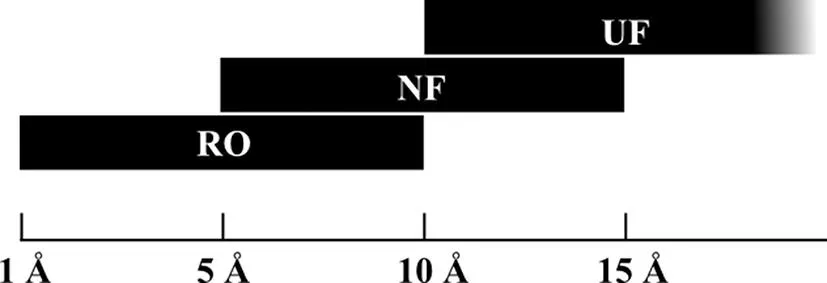
eBook - ePub
Ultrafiltration Membrane Cleaning Processes
Optimization in Seawater Desalination Plants
Guillem Gilabert-Oriol
This is a test
Compartir libro
- 124 páginas
- English
- ePUB (apto para móviles)
- Disponible en iOS y Android
eBook - ePub
Ultrafiltration Membrane Cleaning Processes
Optimization in Seawater Desalination Plants
Guillem Gilabert-Oriol
Detalles del libro
Vista previa del libro
Índice
Citas
Preguntas frecuentes
¿Cómo cancelo mi suscripción?
¿Cómo descargo los libros?
Por el momento, todos nuestros libros ePub adaptables a dispositivos móviles se pueden descargar a través de la aplicación. La mayor parte de nuestros PDF también se puede descargar y ya estamos trabajando para que el resto también sea descargable. Obtén más información aquí.
¿En qué se diferencian los planes de precios?
Ambos planes te permiten acceder por completo a la biblioteca y a todas las funciones de Perlego. Las únicas diferencias son el precio y el período de suscripción: con el plan anual ahorrarás en torno a un 30 % en comparación con 12 meses de un plan mensual.
¿Qué es Perlego?
Somos un servicio de suscripción de libros de texto en línea que te permite acceder a toda una biblioteca en línea por menos de lo que cuesta un libro al mes. Con más de un millón de libros sobre más de 1000 categorías, ¡tenemos todo lo que necesitas! Obtén más información aquí.
¿Perlego ofrece la función de texto a voz?
Busca el símbolo de lectura en voz alta en tu próximo libro para ver si puedes escucharlo. La herramienta de lectura en voz alta lee el texto en voz alta por ti, resaltando el texto a medida que se lee. Puedes pausarla, acelerarla y ralentizarla. Obtén más información aquí.
¿Es Ultrafiltration Membrane Cleaning Processes un PDF/ePUB en línea?
Sí, puedes acceder a Ultrafiltration Membrane Cleaning Processes de Guillem Gilabert-Oriol en formato PDF o ePUB, así como a otros libros populares de Scienze fisiche y Chimica. Tenemos más de un millón de libros disponibles en nuestro catálogo para que explores.
Información
1 Introduction
The popularity of membranes is increasing drastically in a broad range of industrial processes, thanks to its ability to control the permeation rate of species through the membrane. This allows the design of different separation processes, where the goal is to allow one component of a mixture to permeate freely through the membrane, while the other elements have difficulties to permeate. This is achieved through different driving forces which drive each different mass transfer across the membrane. These are represented by any combination of a concentration, a pressure, a temperature or an electric potential gradient.
One of the key aspects of membranes is to effectively control the membrane fouling, which decreases the permeability of the membrane. If fouling is not properly controlled, the membrane can irreversibly lose flow.
Ultrafiltration, in particular, is a separation membrane technology based on particle size exclusion. This is achieved thanks to the different small micropores which act as a sieve and prevent the particles which are bigger than the pore diameters to flow freely through the membrane. The use of ultrafiltration as a pretreatment of the reverse osmosis in the seawater desalination application has gained special popularity in recent years. Ultrafiltration is a key factor in reducing fouling to the reverse osmosis. Among its key benefits against the conventional pretreatment are a lower footprint and a better filtrate water quality.
1.1 Membrane filtration
Membranes are classified according to their pore diameter. An overview of each membrane technology regarding its pore diameter is given in the next paragraph. In addition, Figure 1.1 provides a graphical scheme summary [1]. Figure 1.2 details the intersection region between both mass transport models [1]. The pore flow model is represented by ultrafiltration, and the solution diffusion model is represented by reverse osmosis. In the intermediate section, nanofiltration combines both models to describe its behavior. Finally, Table 1.1 illustrates some examples of typical species that are filtrated using one of the described membrane technologies, together with their typical size [1]. Therefore, using Figures 1.1 and 1.2, it is possible to assess which filtration technology will be more suitable to filtrate or concentrate one of the species shown in the table.

Figure 1.1: Membranes classified by their pore diameter.

Figure 1.2: Reverse osmosis, nanofiltration and ultrafiltration membranes classified by their pore diameter.
Table 1.1:Species with their size.
| Species | Size |
|---|---|
| H2O | 0.2 nm |
| Na+ | 0.37 nm |
| Sucrose | 1 nm |
| Hemoglobin | 7 nm |
| Influenza virus | 0.1 µm |
| Pseudomonas diminuta | 0.28 µm |
| Staphylococcus bacteria | 1 µm |
| Starch | 10 µm |
Reverse osmosis membranes have pore diameters that range from 0.1 to 1 nm [1]. These pores have the particularity that they are so small that discrete pores do not exist. Instead, the pores are formed through unstable spaces between polymer chains, which are created and faded as a result of their molecular thermal motion. These fluctuating pores represent the diffusion of species throughout the dense membranes. In contraposition, the bigger and more stable pores observed in the ultrafiltration porous membranes represent the mass flux through convection described by the pore flow model. The solution diffusion model, which is not covered in this book, makes two assumptions. The first is that the solvents dissolve inside the membrane, and thereafter they diffuse through the dense film according to the present concentration gradient. In the reverse osmosis, separation occurs because of the different solubility and mobility of each species throughout the membrane.
Nanofiltration membranes have pore diameters that range from 0.5 to 1.5 nm [1]. These pores have the particularity of being between truly microporus membranes and clearly dense films. Therefore, mass transfer through nanofiltration membranes is described using both pore flow and solution diffusion models. This happens because if membrane polymer chains are very stiff, the molecular motion of the polymer is...